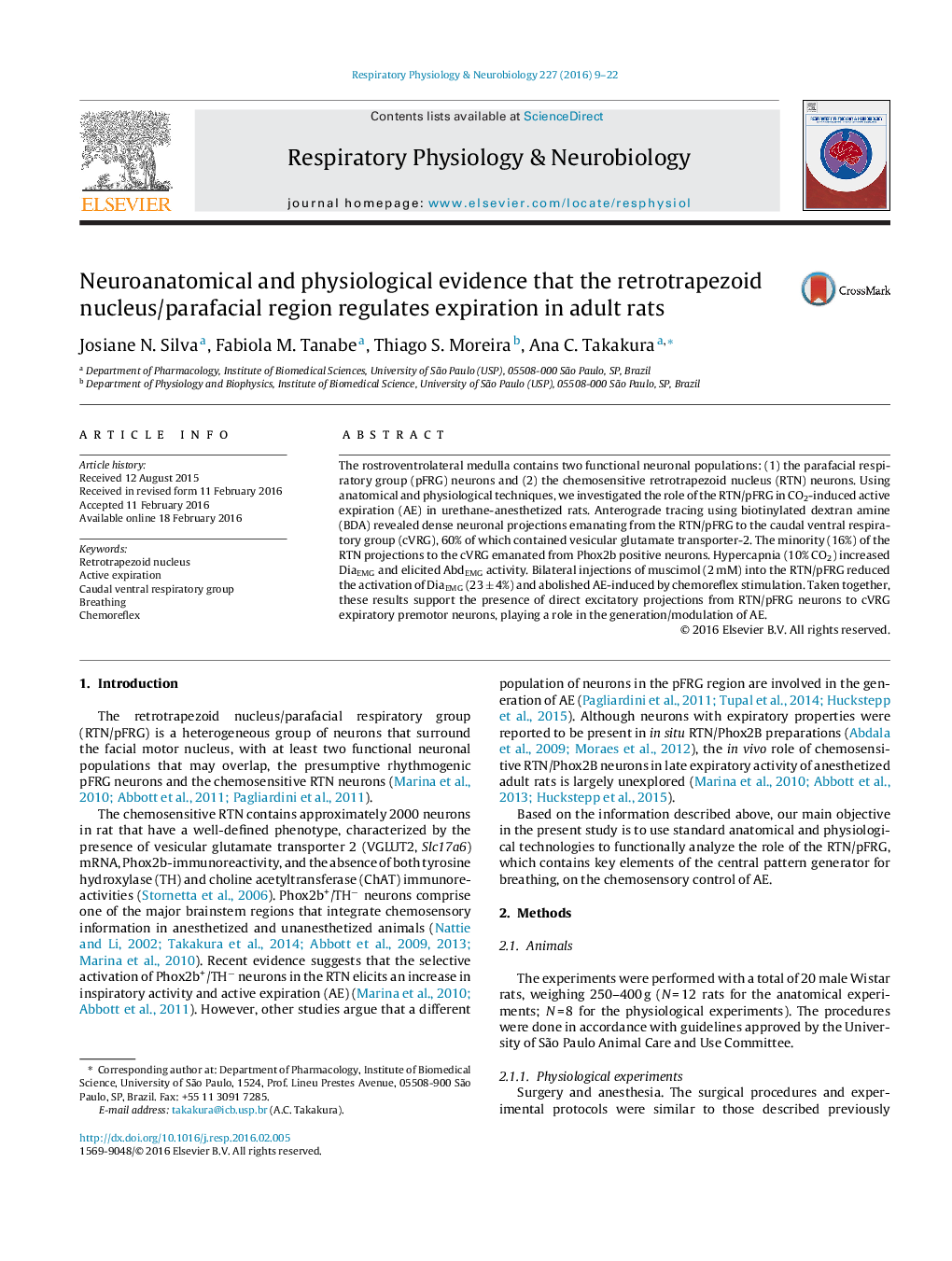| Article ID | Journal | Published Year | Pages | File Type |
|---|---|---|---|---|
| 2846659 | Respiratory Physiology & Neurobiology | 2016 | 14 Pages |
•There is a divergence in the literature about the involvement of Phox2b neurons of the RTN in the control of expiratory activity.•This study demonstrates the existence of a direct excitatory input from RTN/parafacial neurons to premotor neurons in the cVRG.•This study suggests a possible role in the processing of active expiration that includes a small proportion of Phox2b neurons in the RTN.•This novel result will add conceivably to understand the neural control of breathing.
The rostroventrolateral medulla contains two functional neuronal populations: (1) the parafacial respiratory group (pFRG) neurons and (2) the chemosensitive retrotrapezoid nucleus (RTN) neurons. Using anatomical and physiological techniques, we investigated the role of the RTN/pFRG in CO2-induced active expiration (AE) in urethane-anesthetized rats. Anterograde tracing using biotinylated dextran amine (BDA) revealed dense neuronal projections emanating from the RTN/pFRG to the caudal ventral respiratory group (cVRG), 60% of which contained vesicular glutamate transporter-2. The minority (16%) of the RTN projections to the cVRG emanated from Phox2b positive neurons. Hypercapnia (10% CO2) increased DiaEMG and elicited AbdEMG activity. Bilateral injections of muscimol (2 mM) into the RTN/pFRG reduced the activation of DiaEMG (23 ± 4%) and abolished AE-induced by chemoreflex stimulation. Taken together, these results support the presence of direct excitatory projections from RTN/pFRG neurons to cVRG expiratory premotor neurons, playing a role in the generation/modulation of AE.
